Technology
Bringing leading-edge technology to bear on patient care.
Breadcrumb
Technology
Bringing leading-edge technology to bear on patient care.
Innovation
Technology Spotlight
The Gamma Knife Center offers an enhanced level of precision and care for certain types of brain tumors or vascular malformations of the brain.
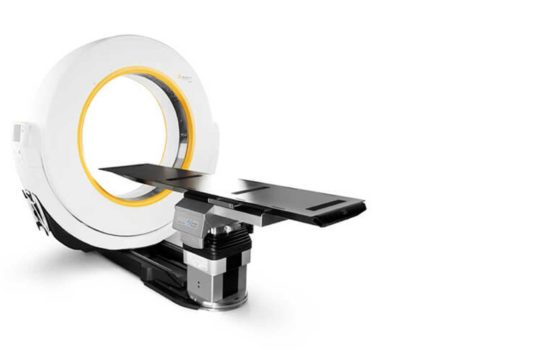 The BrainLab Airo Mobile Intraoperative CT scanner system is a mobile imaging platform that can be used during surgery to obtain a high-resolution CT scan of a patient while in the operating room undergoing surgery.
The BrainLab Airo Mobile Intraoperative CT scanner system is a mobile imaging platform that can be used during surgery to obtain a high-resolution CT scan of a patient while in the operating room undergoing surgery.
Specifically, the technology uses ultrasound waves to create a small ablation to disrupt pathological brain activity in order to reduce the signs or symptoms of Essential Tremor and Tremor-dominant Parkinson’s Disease.
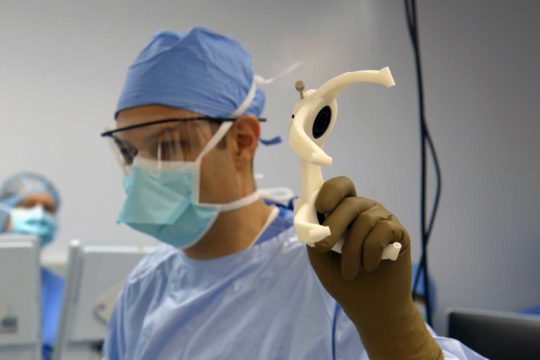 For many neurosurgical procedures, precise placement of the intracranial probes and devices is essential both for safety and for optimal function.
For many neurosurgical procedures, precise placement of the intracranial probes and devices is essential both for safety and for optimal function.
A wide variety of options is available to neurosurgeons to enable millimeter-level accuracy in these procedures, so that all that is required in most cases is a short incision and small hole in the skull through which to pass a probe directly to the desired target.
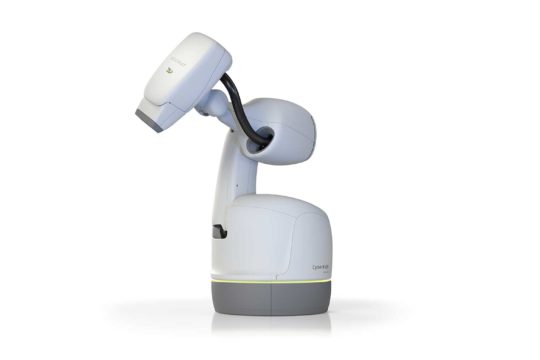 CyberKnife is a type of radiation therapy used for the treatment of a broad range of tumors. The CyberKnife system allows for the delivery of high doses of radiation, with pinpoint accuracy, to the tumor target to destroy it. It is a non-invasive system with many potential benefits to patients including no surgical incision, no pain, no hospital stay and faster recovery time.
CyberKnife is a type of radiation therapy used for the treatment of a broad range of tumors. The CyberKnife system allows for the delivery of high doses of radiation, with pinpoint accuracy, to the tumor target to destroy it. It is a non-invasive system with many potential benefits to patients including no surgical incision, no pain, no hospital stay and faster recovery time.
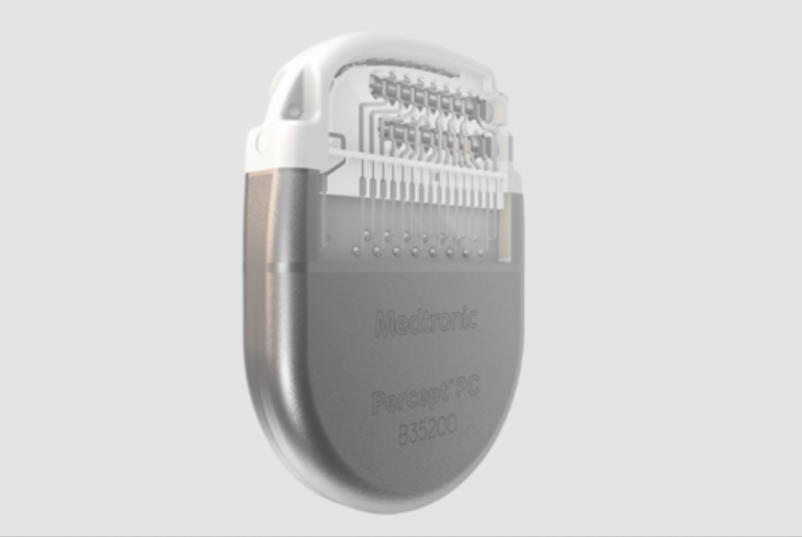 Deep brain stimulation (DBS) is a form of treatment in which pathological brain activity can be regulated by electrical impulses from a fully-implanted, stimulator system. Unlike medications, which target particular receptors that may be distributed broadly throughout different brain areas, DBS targets pathological circuits with high anatomical precision.
Deep brain stimulation (DBS) is a form of treatment in which pathological brain activity can be regulated by electrical impulses from a fully-implanted, stimulator system. Unlike medications, which target particular receptors that may be distributed broadly throughout different brain areas, DBS targets pathological circuits with high anatomical precision.
.jpg) Focused Ultrasound (FUS) is a new neurosurgical technology that involves treating the deep brain in a single outpatient procedure without the need for a surgical incision. Specifically, the technology uses ultrasound waves to create a small ablation to disrupt pathological brain activity in order to reduce the signs or symptoms of Essential Tremor and Tremor-dominant Parkinson’s Disease.
Focused Ultrasound (FUS) is a new neurosurgical technology that involves treating the deep brain in a single outpatient procedure without the need for a surgical incision. Specifically, the technology uses ultrasound waves to create a small ablation to disrupt pathological brain activity in order to reduce the signs or symptoms of Essential Tremor and Tremor-dominant Parkinson’s Disease.
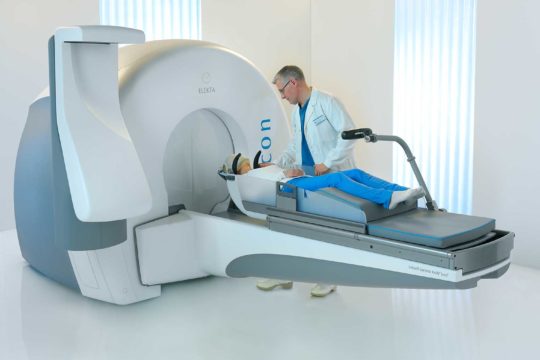 Gamma Knife is a type of radiation therapy used for the treatment of a broad range of tumors and vascular malformations of the brain.
Gamma Knife is a type of radiation therapy used for the treatment of a broad range of tumors and vascular malformations of the brain.
The Gamma Knife machine delivers very high doses of radiation to its target with pinpoint accuracy. It is a non-invasive alternative to surgery in certain patients. There is no incision, no pain from the radiation itself, and no overnight hospital stay.
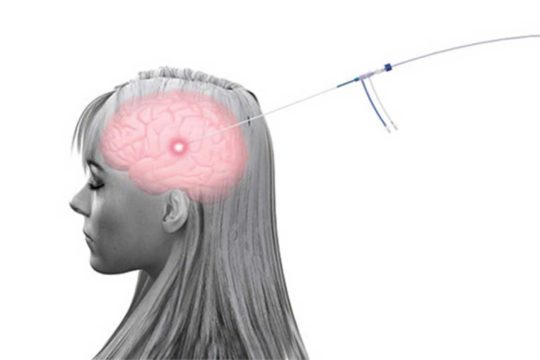 Laser Ablation is a minimally invasive surgical therapy that is used for the treatment of select patients with adult or pediatric epilepsy.
Laser Ablation is a minimally invasive surgical therapy that is used for the treatment of select patients with adult or pediatric epilepsy.
The system allows for precise delivery of laser energy to the focus of seizures in the brain. The laser energy heats and ultimately burns its intended target, while sparing surrounding normal tissue.
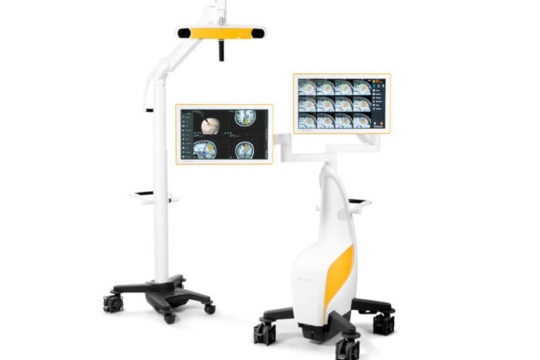 Clinicians in the Department of Neurosurgery use the BrainLab Curve Image Guided Surgery and Kick Purely Navigation for neuro-navigation.
Clinicians in the Department of Neurosurgery use the BrainLab Curve Image Guided Surgery and Kick Purely Navigation for neuro-navigation.
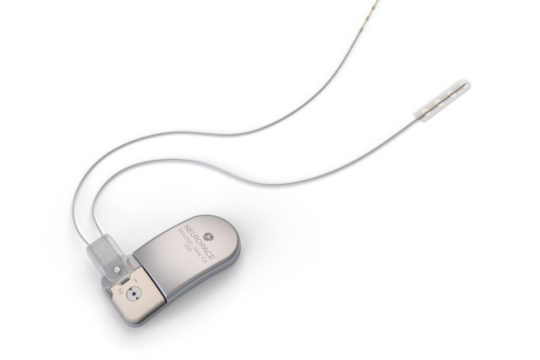 Neuromodulation for epilepsy is a new approach that can be an alternative to traditional epilepsy surgical approaches or work in synergy with them.
Neuromodulation for epilepsy is a new approach that can be an alternative to traditional epilepsy surgical approaches or work in synergy with them.
There are three types of neuromodulation currently approved for epilepsy: Deep Brain Stimulation (DBS), Responsive Neurostimulation (RNS) and Vagal Nerve Stimulation (VNS). They each work by stimulating seizure-causing brain circuits to prevent or abort seizures.
 Neuromonitoring takes the place of neurologic examination while the patient is under anesthesia. This is to prevent injury to these structures and to guide the surgery around them.
Neuromonitoring takes the place of neurologic examination while the patient is under anesthesia. This is to prevent injury to these structures and to guide the surgery around them.
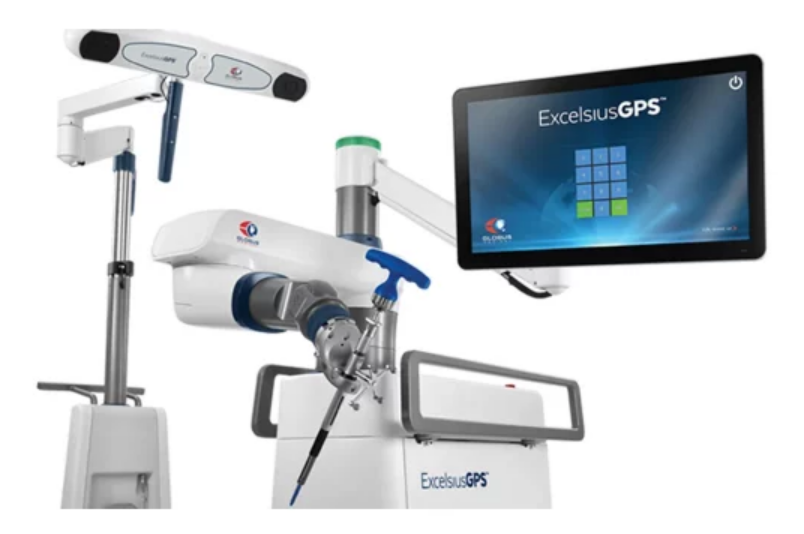 Neurosurgical robots are tools that help guide the surgeon to particular targets in the brain and spine. They do this with millimeter-level accuracy, and therefore contribute to the efficiency, safety, and success of neurosurgical procedures. With these tools, neurosurgeons can place probes to sample tissue or fluid, electrodes for recording or stimulating brain circuits, and fixation devices to stabilize spine injuries.
Neurosurgical robots are tools that help guide the surgeon to particular targets in the brain and spine. They do this with millimeter-level accuracy, and therefore contribute to the efficiency, safety, and success of neurosurgical procedures. With these tools, neurosurgeons can place probes to sample tissue or fluid, electrodes for recording or stimulating brain circuits, and fixation devices to stabilize spine injuries.
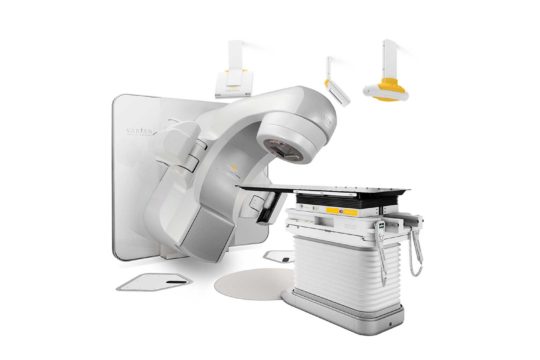 TrueBeam is an innovative system that uses Image-Guided Raditation Therapy (IGRT) to quickly and precisely treat a range of complex cancer types. TrueBeam employs several treatment approaches within one system, allowing doctors to tailor the type and intensity of treatment to meet the needs of individual patients.
TrueBeam is an innovative system that uses Image-Guided Raditation Therapy (IGRT) to quickly and precisely treat a range of complex cancer types. TrueBeam employs several treatment approaches within one system, allowing doctors to tailor the type and intensity of treatment to meet the needs of individual patients.
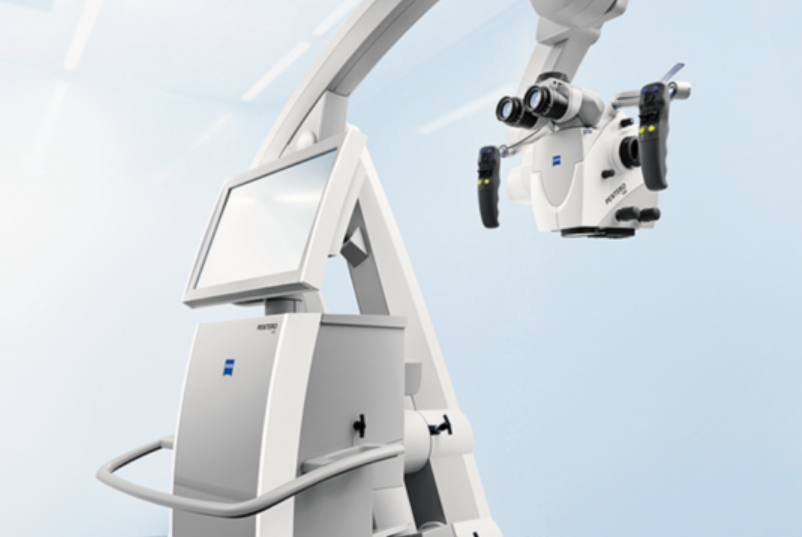 In the Department of Neurosurgery, we use Zeiss Microscopes with the latest technology built in. In addition to being a state of the art intraoperative microscope, the Zeiss we use incorporates direct vascular imaging using Indocyanine green dye (ICG).
In the Department of Neurosurgery, we use Zeiss Microscopes with the latest technology built in. In addition to being a state of the art intraoperative microscope, the Zeiss we use incorporates direct vascular imaging using Indocyanine green dye (ICG).
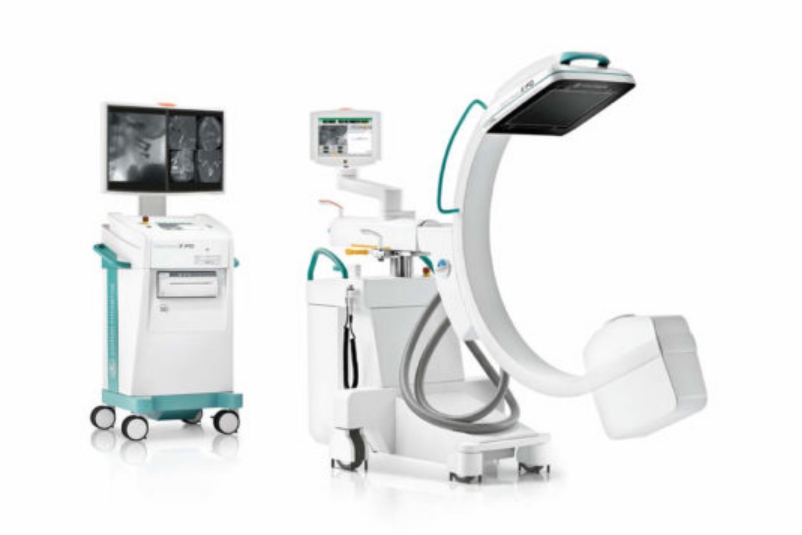 The Ziehm mobile C-arm is an intraoperative X-ray that uses an 180-degree rotation to construct 3D datasets for surgical purposes.
The Ziehm mobile C-arm is an intraoperative X-ray that uses an 180-degree rotation to construct 3D datasets for surgical purposes.
The C-arm is compatible with neuro-navigation and is often used collaboratively. This device provides X-ray images in real time, allowing the surgeon to monitor progress at any point during the operation.